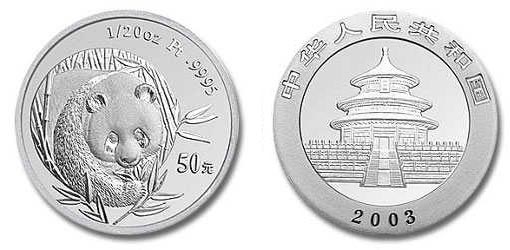China is one of the most influential countries in the world and more specifically in Asia. With that being said it is no surprise that they joined much of the rest of the world in the early 1980s and began producing both gold and silver coins. The most popular coin series produced by China is the Chinese Panda coin series. First being minted in 1982, these gold and silver coins quickly became sought after by investors and collectors from all over Asia and the world.

To satisfy investors who were interested in more than just silver and gold, the Chinese government decided to produce a platinum Panda starting in 1987. Platinum Pandas were just as popular as their gold and silver counterparts, but because platinum is rarer than gold and silver, Platinum Pandas were far more rare than gold or silver ones. The purpose of this article is to explain everything there is to know about the Platinum Panda, from annual mintages, to the images on both sides of the coin, and everything in between.
Platinum Panda Sizes
The one thing you will quickly find out about Platinum Pandas is that their mintages and the sizes released each year vary dramatically. Production of these coins was started in 1987 and unlike other Pandas, they have been discontinued and were minted in sporadic, disconnected years.
All in all you can find Platinum Pandas in sizes as small as 1/20 ounce to as large as 1 ounce. The following will explain a bit more about the years each sized coin was available as well as the dimensions and face values.
- 1 oz Platinum Panda (1987-1990)-Diameter: 32 mm; 100 Yuan face value
- ½ oZ Platinum Panda (1990)-Diameter: 27 mm; 50 Yuan face value
- ¼ oz Platinum Panda (1990)-Diameter: 22 mm; 25 Yuan face value
- 1/10 oz Platinum Panda (1990, 1994-1996, 2002, 2005)-Diameter: 18 mm; 10 Yuan face value (100 Yuan in 2002 and 2005)
- 1/20 oz Platinum Panda (2002, 2003)-Diameter: 14 mm; 50 Yuan face value
Purity
When talking about the purity of a given coin, you are discussing how much platinum metal is in the platinum coin. The closer to 100% pure the better, because this means your coin is made of nothing other than platinum. While some coins have purities as high as 90%, other have purities of 50% or less, while still other have purities over 99%. The purity level of the coin not only determines, or helps determine, the value of said coin, it also determines whether the coin would be good for investing or not.
Platinum Pandas, like many platinum coins, have a purity level of 99.95% which makes them a good option for both collectors and investors. The only reason investors might shy away from the Platinum Panda is because of its scarcity in relation to other platinum coins. The sporadic annual mintages mean that certain versions of the coin are rarer than others and thus more valuable amongst collectors. Whenever a coin is hard to find the cost of the coin is usually higher than it would be if the supply were abundant and for this reason investors tend to stay away from rare coins like the Platinum Panda.
Quantities Produced
The years in which the Platinum Panda was produced vary dramatically, and as you probably would have guessed, so too did the number of coins minted in those years. Because a significantly smaller amount of platinum products are produced in a given year than gold and silver, Platinum Panda mintages rarely ever exceeded 5,000.
In the early years annual mintages could be as low as 2,000 but in the final years of production, Platinum Pandas’ mintages exceeded 30,000 and could be found numbering about 50,000 in both 2003 and 2004. Unlike a lot of other coins produced around the world there really is/was no rhyme or reason behind when and how many Platinum Pandas were produced. These facts do well to increase the general public’s interest in the coin.